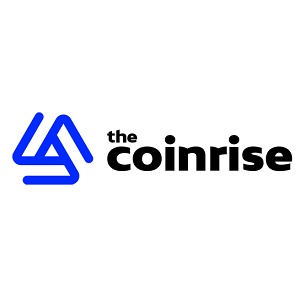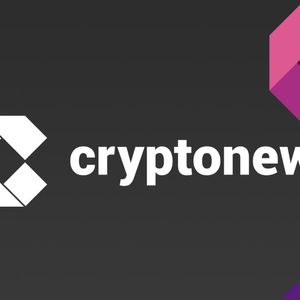South Korea is currently grappling with a significant financial challenge: increasing capital outflows South Korea driven primarily by the rising popularity and attractive yields offered by stablecoins on offshore cryptocurrency exchanges. This trend is not just an economic statistic; it’s a real concern for the nation’s financial stability and the future of its currency, the won. What’s Driving Capital Outflows South Korea? The core issue stems from the differential in investment returns. Traditional banking products in South Korea offer relatively modest interest rates. In contrast, many offshore crypto exchanges South Korea provide staking or lending products for stablecoins (cryptocurrencies pegged to stable assets like the U.S. dollar) that boast significantly higher yields. For investors seeking better returns, moving capital into these stablecoin products becomes an attractive option. Consider the simple economics: Local Banks: Low single-digit interest rates on deposits. Offshore Stablecoin Products: Potentially much higher yields, sometimes ranging from mid to high single digits, or even higher depending on the platform and specific product. This yield gap incentivizes individuals and potentially institutions to convert their South Korean won into stablecoins like USDT or USDC and transfer them to platforms outside the country to earn these higher returns. This movement of funds constitutes a capital outflow. Understanding Stablecoin Risks South Korea Faces The implications of this trend are far-reaching. A recent paper from Hashed Open Research (HOR) highlighted the specific dangers posed by U.S. dollar-pegged South Korea stablecoins like Tether (USDT) and USD Coin (USDC) to the nation’s financial ecosystem. The report paints a concerning picture of potential instability. Key risks identified by HOR include: Weakening of the Won: As more capital leaves the country to chase stablecoin yields, demand for the won decreases relative to the demand for stablecoins (and ultimately, the USD they are pegged to). This can put downward pressure on the won’s exchange rate. Loss of Monetary Control: The South Korean central bank has tools to manage the money supply and influence interest rates for the won. However, these tools have limited effect on capital held and traded in offshore stablecoins. A significant shift of economic activity into stablecoins could erode the central bank’s ability to manage its own currency effectively. Blurring the Lines Between Economies: Continued large-scale capital outflows could increasingly integrate the South Korean economy with the offshore crypto economy, making it harder to distinguish between traditional financial activities and crypto-based ones. This lack of clear separation can create regulatory challenges and systemic risks. Systemic Risk: While stablecoins aim for stability, they are not without risk. Issues with reserves, regulatory crackdowns, or platform failures on offshore exchanges could have ripple effects, potentially impacting South Korean investors and, if the scale is large enough, the broader financial system. The HOR paper serves as a stark warning that ignoring the growing influence of South Korea stablecoins and the resulting outflows could have tangible negative consequences for the country’s economic sovereignty and stability. South Korea’s Potential Response: A National CBDC? Recognizing these pressing challenges, South Korea is reportedly exploring countermeasures. One significant consideration is the potential launch of its own state-backed digital currency, often referred to as a Central Bank Digital Currency (CBDC). A South Korea CBDC could serve multiple purposes in addressing the stablecoin challenge: Offering a Domestic Digital Alternative: A won-pegged CBDC could provide a digital form of the national currency that is as convenient and potentially as innovative as stablecoins, but remains within the domestic financial system and under the central bank’s control. Competing on Features: While a CBDC might not directly offer the high yields seen on offshore platforms (as it would likely be a liability of the central bank, similar to physical cash), it could offer other benefits like instant settlement, reduced transaction costs, and programmable features that could make it attractive for various use cases, potentially reducing the reliance on foreign stablecoins for domestic transactions or innovations. Strengthening Financial Sovereignty: By providing a robust, digital form of the won, a CBDC could help reinforce the won’s usability in the digital age and counter the encroachment of foreign-pegged digital currencies into the domestic economy. Improving Data and Oversight: A CBDC could offer the central bank greater visibility into digital transaction flows within the economy, providing better data for monetary policy decisions and potentially aiding in combating illicit finance. The consideration of a South Korea CBDC signals that the government and financial authorities are taking the threat of capital outflows and the growing influence of stablecoins seriously. It’s a complex undertaking, involving significant technological, regulatory, and societal considerations, but it represents a proactive step towards maintaining control over the nation’s financial future in a rapidly evolving digital landscape. The Role of Offshore Crypto Exchanges South Korea Investors Use It’s important to note that the issue isn’t necessarily the stablecoins themselves, but the platforms and products offering high yields outside of South Korea’s regulatory purview. Offshore crypto exchanges South Korea residents can access provide the infrastructure where these yield-generating activities occur. While offering potential benefits to individual investors through higher returns, their operation outside of domestic regulation creates a blind spot for South Korean authorities regarding capital flows and associated risks. This situation highlights a global challenge for regulators: how to manage the interaction between domestically regulated financial systems and the largely unregulated, borderless world of decentralized finance and offshore crypto platforms. The yield differential is a powerful incentive that regulation alone within a single country struggles to contain. Conclusion: Navigating the Digital Tide South Korea finds itself at a critical juncture, where the allure of high yields on South Korea stablecoins held on offshore crypto exchanges South Korea can access is leading to concerning capital outflows South Korea needs to address. The stablecoin risks South Korea faces, as highlighted by research, are not theoretical; they pose a tangible threat to the won’s stability and the nation’s financial autonomy. The exploration of a South Korea CBDC represents a strategic move to adapt to this new reality, aiming to offer a domestic digital alternative that can compete for usability and relevance in the digital economy. The outcome of this challenge will likely influence how other nations approach the intersection of traditional finance, stablecoins, and the broader crypto market. The situation in South Korea serves as a compelling case study for regulators and policymakers worldwide, demonstrating the complex interplay between technological innovation, economic incentives, and the imperative of maintaining national financial stability in the digital age. To learn more about the latest crypto market trends, explore our article on key developments shaping stablecoins and capital flows.














